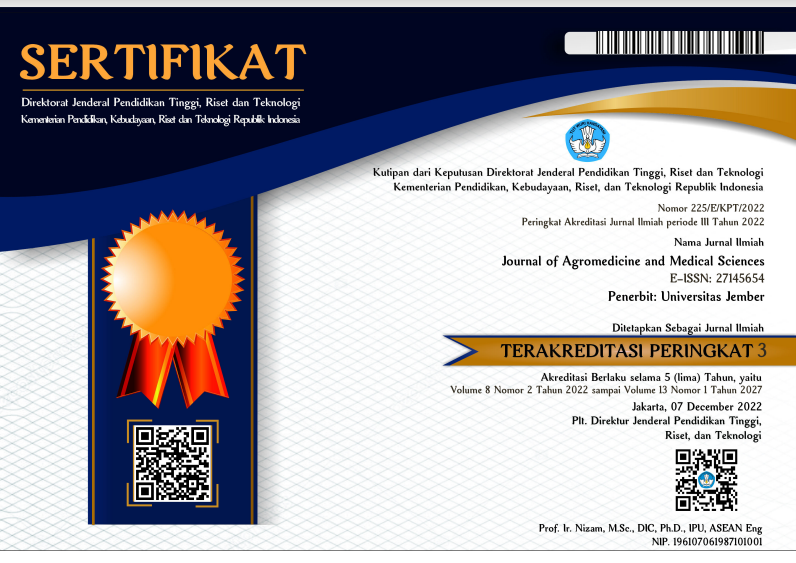The Correlation between Thrombocyte, Hematocrit, and Leukocyte Count with Length of Hospitalization in Pediatric Patient with Dengue Hemorrhagic Fever (DHF)
DOI:
https://doi.org/10.19184/ams.v10i1.40074Abstract
Dengue Hemorrhagic Fever (DHF) is a disease caused by dengue virus with mosquito vectors. Supporting examinations to determine the course of DHF include platelet counts, hematocrit values, and leukocyte counts. Length of hospitalization is the number of days when the patient receives treatment in the hospital, calculated when recorded as an inpatient until discharge from the hospital. This type of research is an analytic observational study with a cross sectional research design. Cases of pediatric DHF at Bina Sehat Hospital Jember for the period 2020-2022 totaled 296 patients. Data were obtained using medical records. Of the 296 cases of pediatric DHF, samples were then taken by purposive sampling according to the researcher's criteria until 44 samples were obtained. The data were then analyzed using Rank Spearman. The results of the data analysis showed that there was a strong opposite relationship (p = 0.000; r = -0.562) between platelet count and length of hospitalization, a strong unidirectional relationship (p = 0.001; r = 0.495) between hematocrit value and length of hospitalization, and a strong opposite relationship (p = 0.005; r = -0.415) between leukocyte count and length of hospitalization. Suggestions for future research are to use other variables such as nutritional status, medical history, and other laboratory examinations.
Keywords: Dengue Hemorrhagic Fever; Length of Hospitalization; Thrombocyte; Hematocrit; Leukocyte























